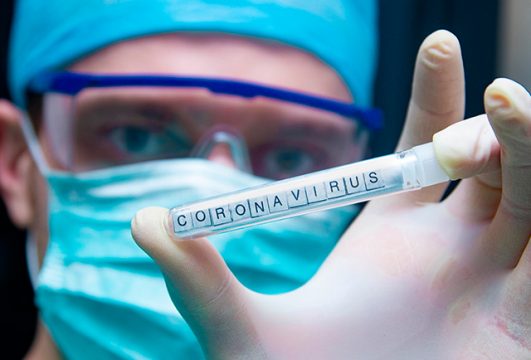Coronavirus disease 2019 (COVID-19) is a viral respiratory illness that can cause a severe acute respiratory syndrome (SARS-CoV-2), predisposing patients to thrombosis (both in veins and arteries) due to excessive inflammation, platelet activation, endothelial dysfunction, and stasis.

In addition, many patients receiving antithrombotic therapy for different indications may now become infected with COVID-19, which can have implications for drug choice, dosing, and monitoring.
The most frequent hemostatic alterations caused by the aforementioned infection are thrombocytopenia and D-dimer elevation, both of which are related to increased need of invasive ventilation, critical care, and death. The prognostic value of other parameters is uncertain or even contradictory. Additionally, we are still unclear on whether these alterations are specific effects of this virus or part of a systemic inflammatory response.
Elevated troponin values have also been associated with bad prognosis in a setting of infection. Such elevation may be caused by unspecified myocardial injury, worsening kidney failure, viral myocarditis, pulmonary embolism, or type I or II infarction.
Read also: How is the Pandemic Affecting MI? The Chinese Experience.
As with any other critical patient, COVID-19 patients are at an increased risk for deep vein thrombosis. A recent study conducted in China applied the Padua Prediction Score and reported that 40% of patients hospitalized with COVID-19 were at a high risk for venous thromboembolism. That study did not report neither the incidence of thrombotic events nor the measures taken, but an indication for prophylaxis (low-molecular-weight heparin once a day) or (in case of contraindication) intermittent pneumatic compression seems warranted.
In the case of patients who experience venous thromboembolism while infected, we can also consider unfractionated heparin as endovenous infusion. As an advantage, this alternative can be interrupted whenever necessary and it has no drug interactions with antiviral drugs under research. In any case, obtaining an adequate activated partial thromboplastin time (APTT) range and exposing healthcare personnel to multiple sample collection for dosage calibration can be challenging.
When a patient with COVID-19 experiences a type I infarction due to plaque rupture, current guidelines indicate dual antiplatelet therapy and anticoagulation, unless there is a contraindication.
Read also: Asymptomatic Carotid Artery Stenosis: Do We Have All the Answers?
Before any intervention, we should make an effort to distinguish among unspecified cardiac injury, myocarditis, or actual plaque rupture. Transthoracic echocardiography may identify segmental wall anomalies that would suggest a type I infarction.
Many recommendations, particularly from Chinese origin, talk about going back to thrombolysis. However, that may pose a high risk in a setting where infection may simulate a large number of acute coronary syndromes.
Original title: COVID-19 and Thrombotic or Thromboembolic Disease: Implications for Prevention, Antithrombotic Therapy, and Follow-up.
Reference: Behnood Bikdeli et al. https://doi.org/10.1016/j.jacc.2020.04.031.
Subscribe to our weekly newsletter
Get the latest scientific articles on interventional cardiology
We are interested in your opinion. Please, leave your comments, thoughts, questions, etc., below. They will be most welcome.





